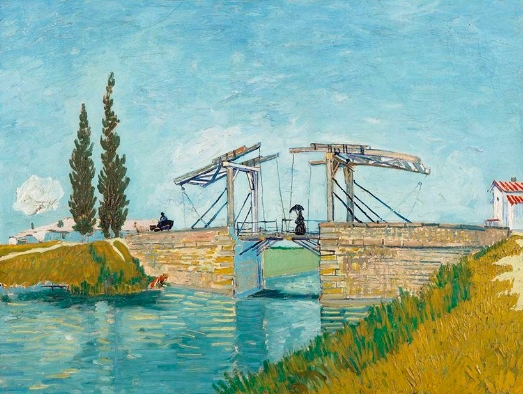Vincent Van Gogh’s iconic painting “The Langlois Bridge at Arles” depicts a picturesque bridge over the canal in the town of Arles, France. Let’s take a closer look at the history and inspiration behind this famous artwork.
The Background of the Painting
Van Gogh painted “The Langlois Bridge at Arles” in 1888 during his time living in Arles. The town’s bridges and canals were a frequent subject of his work, and the Langlois Bridge was no exception. The painting captures the vibrant colors and bold brushstrokes that are characteristic of Van Gogh’s style.
Inspiration from Japanese prints
One source of inspiration for Van Gogh’s painting was the Japanese prints he had collected and admired. These prints often featured bridges and landscapes, and Van Gogh incorporated elements of their style into his own work. The use of vivid colors and flattened perspectives in “The Langlois Bridge at Arles” can be seen as a nod to the influence of Japanese art on Van Gogh.
The Bridge’s Significance
The Langlois Bridge itself holds significance beyond its appearance in Van Gogh’s painting. Built in the 19th century, the bridge played a vital role in connecting the town of Arles to surrounding areas. Today, the bridge has been replaced by a more modern structure, but the memory of Van Gogh’s painting keeps its legacy alive.
Exploring the Iconic Bridge
Visitors to Arles can still experience the beauty of the town’s bridges and canals, including the site of the Langlois Bridge. Walking along the canal, one can imagine Van Gogh capturing the scene with his paintbrush, bringing to life the peacefulness and serenity of the area.
In conclusion, “The Langlois Bridge at Arles” is not just a painting, but a testament to Van Gogh’s ability to capture the beauty and essence of a place. The iconic bridge continues to inspire artists and art enthusiasts alike, serving as a reminder of the enduring legacy of one of history’s most celebrated painters.


